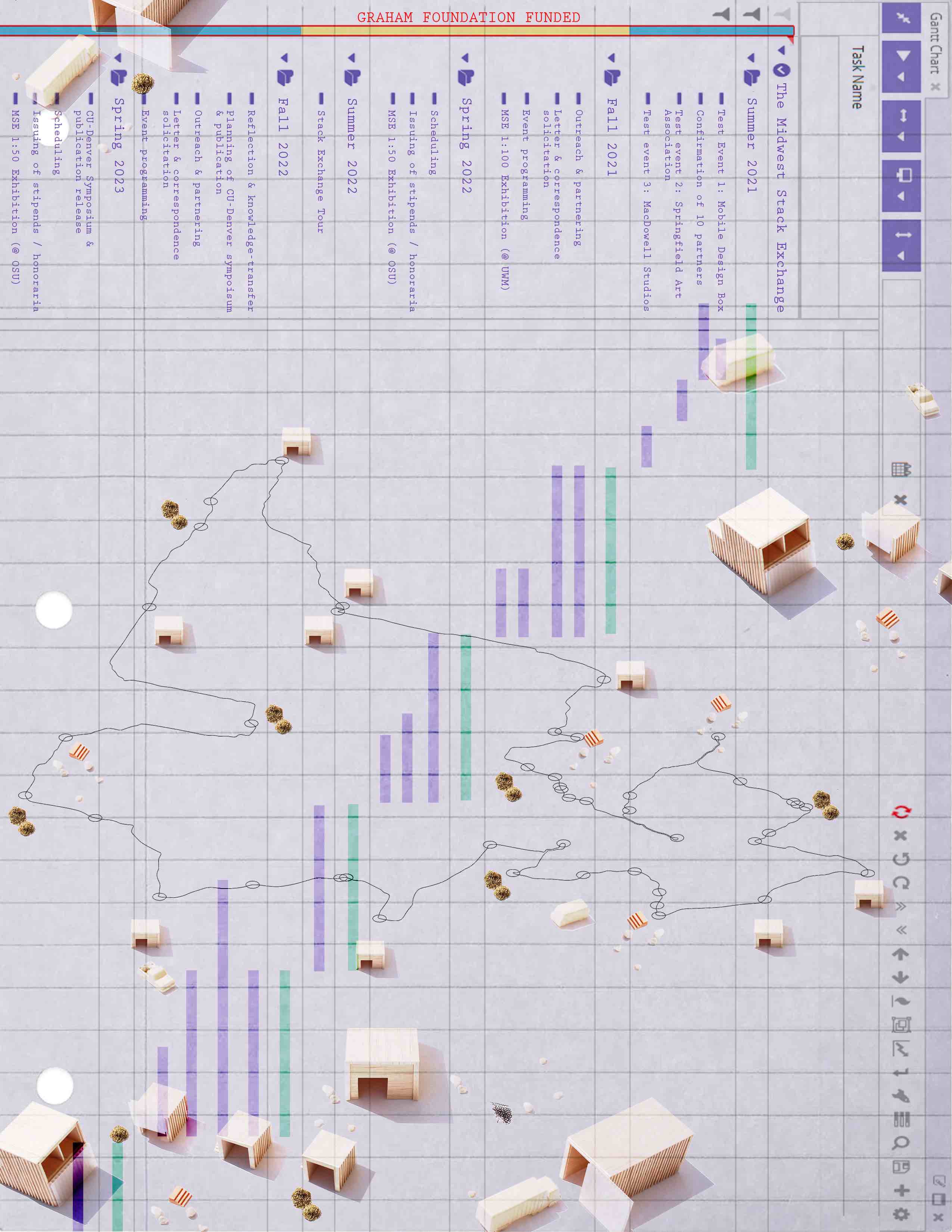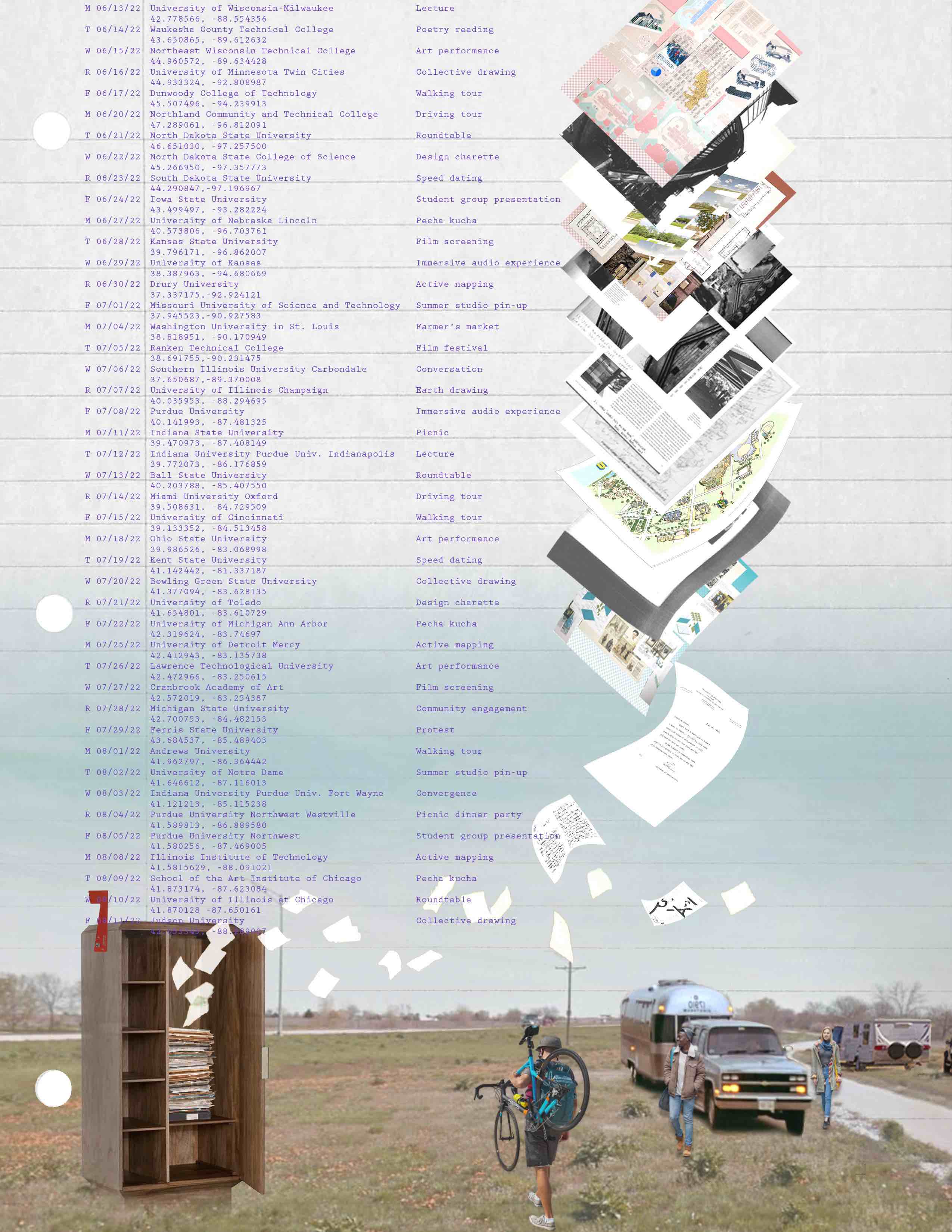MIDWEST STACK EXCH.
+ Research
Commonly described as the "flyover states," the American Midwest has long served as an intrinsic yet under-recognized infrastructure for a coastal discipline. With 44 schools of architecture, 19 fellowships, and several internationally acclaimed institutions––such as the Walker Art Center and Graham Foundation––the Midwest is unquestionably a space of emergence.
The Midwest Stack Exchange (MSE) is a two-part project: First, it brings together the 44 schools of architecture in the Midwest through an annual, region-wide, pedagogical experiment that takes stock of the ways America’s interior has been a historical site for a coastal architectural discourse. Secondly, it creates a digital archive with interactive maps and chat functionality to support the ongoing dialogues. MSE examines the structuring of the American Academy, the role of the chair in architecture schools, and the circulation of thinkers across America's interior that have shaped the past 149 years of architectural discourse.
Commonly described as the "flyover states," the American Midwest has long served as an intrinsic yet under-recognized infrastructure for a coastal discipline. With 44 schools of architecture, 19 fellowships, and several internationally acclaimed institutions––such as the Walker Art Center and Graham Foundation––the Midwest is unquestionably a space of emergence.
The Midwest Stack Exchange (MSE) is a two-part project: First, it brings together the 44 schools of architecture in the Midwest through an annual, region-wide, pedagogical experiment that takes stock of the ways America’s interior has been a historical site for a coastal architectural discourse. Secondly, it creates a digital archive with interactive maps and chat functionality to support the ongoing dialogues. MSE examines the structuring of the American Academy, the role of the chair in architecture schools, and the circulation of thinkers across America's interior that have shaped the past 149 years of architectural discourse.





